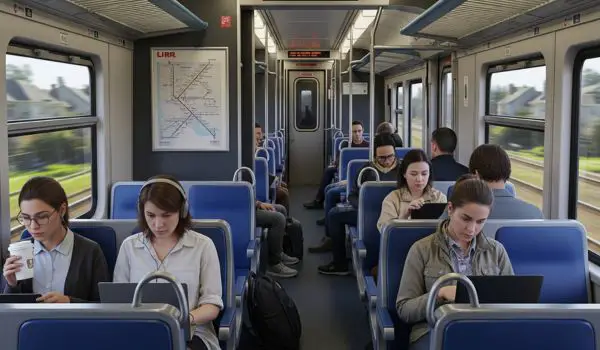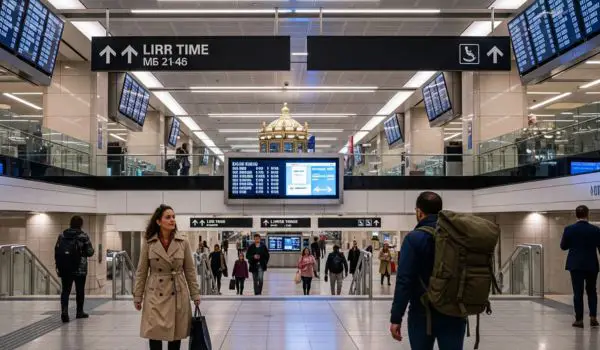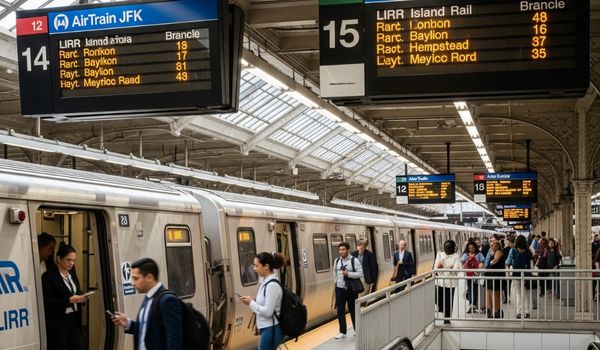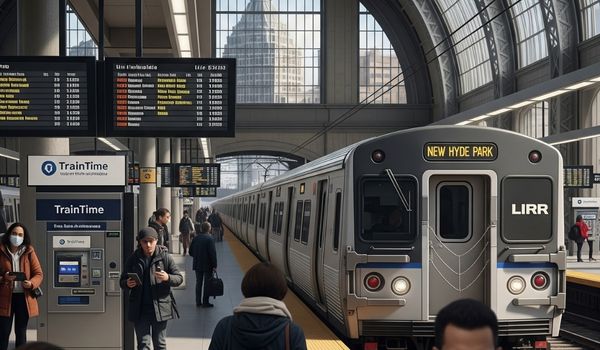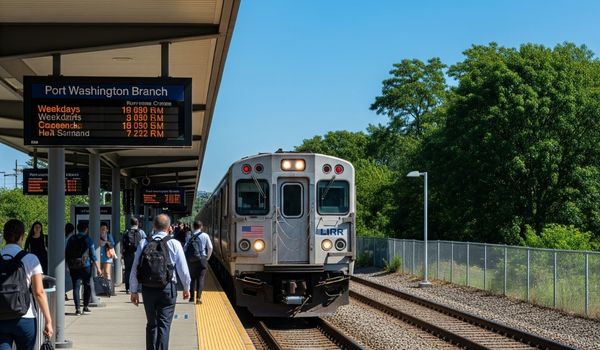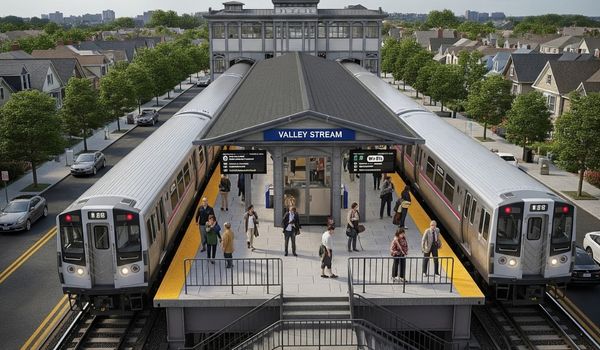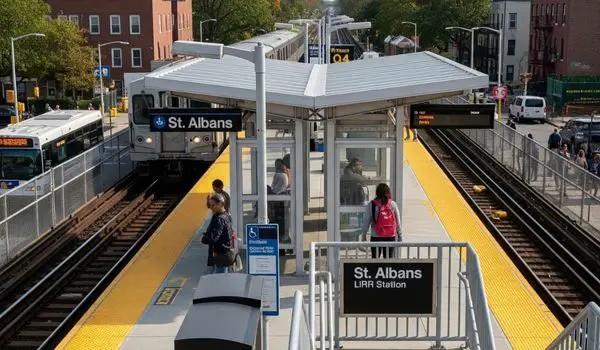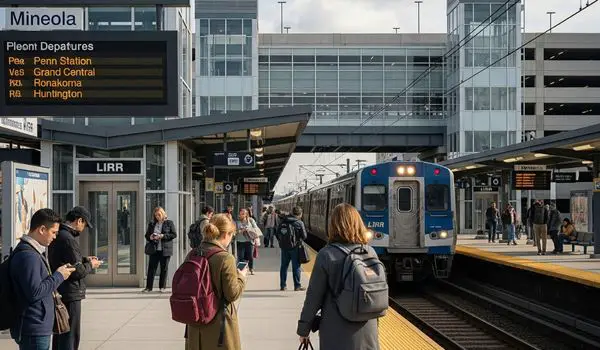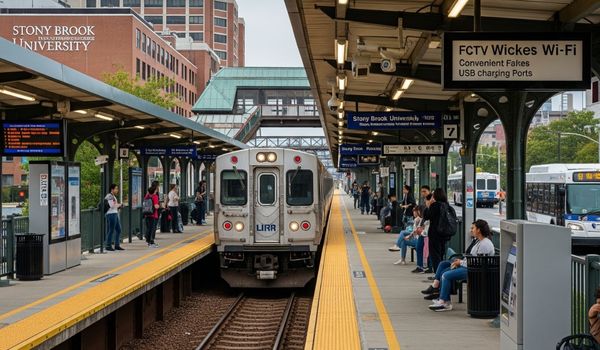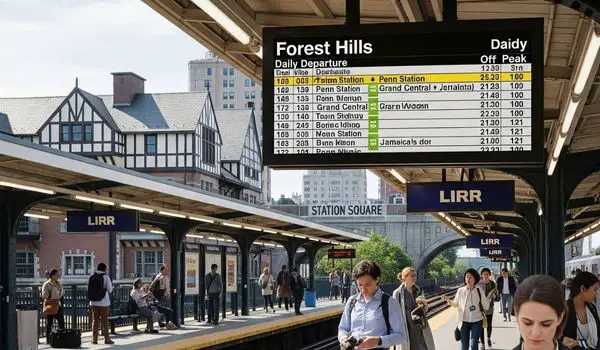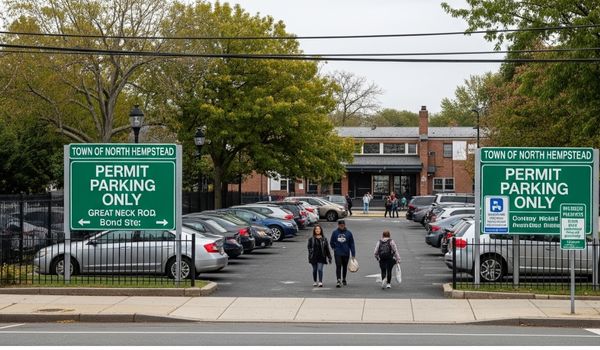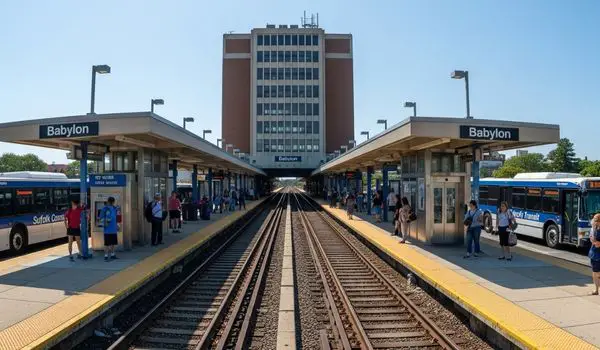LIRR Schedule | MTA Lirr Map, Tickets Fares 2025
The Long Island Rail Road (LIRR) is the busiest commuter railroad system in North America, carrying an average of 384,400 passengers each weekday on 728 daily trains serving 124 stations in the eight lines of service the system utilizes across Long Island, New York, as well as to and from Pennsylvania Station in Manhattan.
LIRR map includes 126 stations and more than 700 miles of track, it runs almost 950 trains on an average weekday that carry about 200,000 riders. The network consists of two primary lines and several largely-unused key branches that run to major hubs in Manhattan, Brooklyn, and Queens from Nassau and Suffolk counties.
The LIRR is one of the few commuter systems in the world that uses electric as well as diesel or CNG equipment. The electric service runs as far west as Huntington with the diesel service east of there. Recent projects, such as Grand Central Madison terminal, have served to enhance accessibility by providing through-peak service to the East Side of Manhattan. As an MTA agency, as well part of the LIRR is integral to daily life in the region and connects New York’s 27 country communities to the global economy of the New York metropolitan area.
MTA LIRR Map
The MTA LIRR map depicts the entire commuter rail network between New York City and eastern Long Island. That is made up of 11 branches color-coded by names like Babylon, Ronkonkoma and Port Washington, with critical junctures at Penn Station, Grand Central Madison and Jamaica. The map details transfer points, accessible stations and electric and diesel service zones. It’s a helpful resource for planning trips, with updates posted at the MTA website.
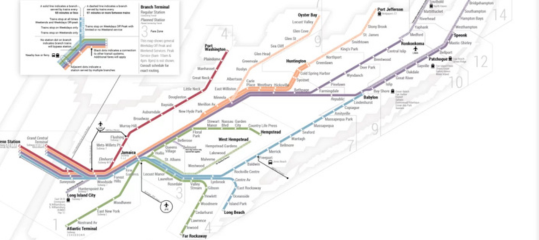
LIRR Stops [LIRR Stations]
The railroad serves Nassau and Suffolk counties as well as Queens, Brooklyn and Manhattan and is operated by the Metropolitan Transportation Authority (MTA). It services more than 700 miles of track, 126 stations and runs for about 120 miles from Montauk to Manhattan. The LIRR operates around the clock, and is the busiest commuter railroad in the United States, serving hundreds of thousands of passengers every day. The LIRR map employs colors and lines to depict 11 branches and separates electrified routes from diesel-only sections.

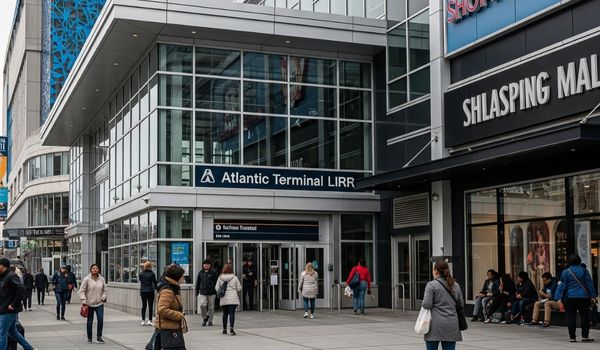
Key NYC Terminals
- Penn Station (Manhattan): Historic former main commuter terminal.
- Grand Central Madison (Manhattan): Opened in 2023, provides direct East Side service.
- Atlantic Terminal (Brooklyn): Principal terminal for service in Brooklyn.
- Hunterspoint Avenue & Long Island City (Queens): Weekday-only terminals.
Major Transfer Hub
- Jamaica Station (Queens): A central transfer point for most LIRR lines to/from Manhattan, Brooklyn and Queens.
LIRR Branches
| Branch Name | Description |
|---|---|
| Babylon Branch | South shore line with numerous stations on an embankment. |
| City Terminal Zone | Perhaps around NYC terminals. |
| Far Rockaway Branch | Service to southwestern Queens. |
| Hempstead Branch | It is part of the main line and goes out to Hempstead. |
| Long Beach Branch | Services the Long Beach barrier island. |
| Montauk Branch | Longest diesel line east of its system electrification. |
| Oyster Bay Branch | Along the scenic northern on the diesel portion. |
| Port Jefferson Branch | Electric to Huntington, diesel to Port Jefferson. |
| Port Washington Branch | Skips Jamaica, direct to Manhattan. |
| Ronkonkoma Branch | Main line to Suffolk County; Yaphank station to open 2026. |
| West Hempstead | Main Line connection, western terminus at West Hempstead. |
| Belmont Park Branch | Special events only. |
Service Patterns
- Local: All stops east of Jamaica (or Woodside for Port Washington).
- Semi-Local & Semi-Express: Does not stop at some stops.
- Express & Rapid Express: Skip many or all stops except for limited service within Queens and, on the R, within Brooklyn and Manhattan; some also skip Jamaica.
- Diesel Service: Operates outside the electrified zones such as Montauk, Port Jefferson and Oyster Bay.
LIRR Zone Map
The LIRR is partitioned into numerous fare zone, A geographic region used to zone tickets at stations located in heavily populated communities that have many manhattan-bound travelers, which refers to the stations (multiple ones) you can travel between without the need of paying additional fare for a trip between them. The more zones you travel through, the more expensive your fare. This is fairly typical in commuter rail systems,
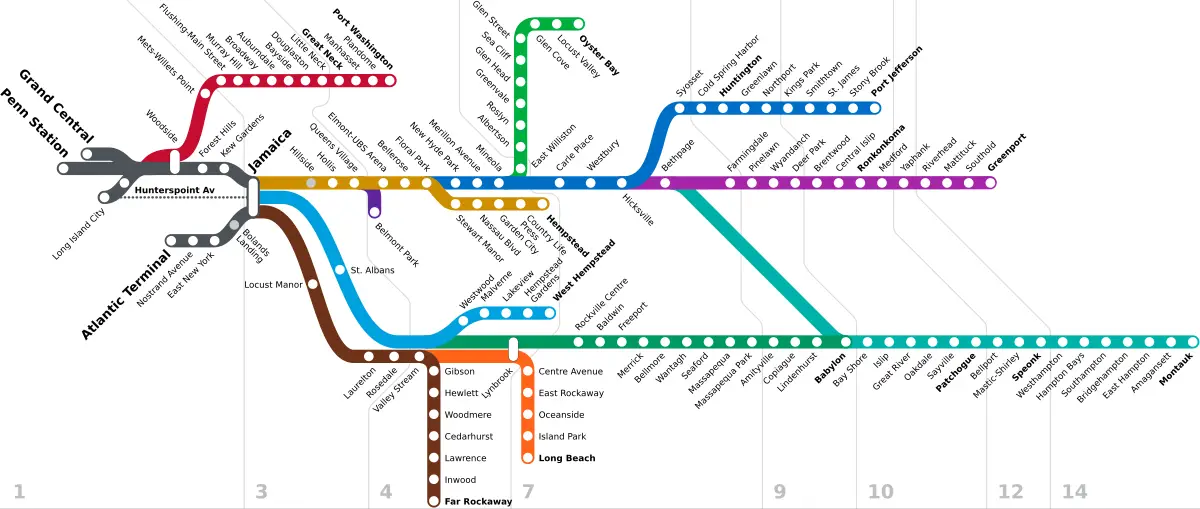
How Zones Affect LIRR Fares
LIRR was not mostly by the number of zones ridden. The fare is lower for trips entirely within a single zone, but is higher for trips crossing two or more zones. To find out what you fare will be, find the zone of your departing station and your destination. The fare table reflects this by charging at the intersection of these zones.
Ticket Types and Zones
| Ticket Type | Description |
|---|---|
| One-Way | Fares cover one way of travel between zones. |
| 10-Trip | This fare permits for ten rides for a one passenger within six months, and it is shareable. |
| Weekly/Monthly | Allow unlimited travel for a week or month, perfect for regular users. |
| CityTicket | All-day travel on the railroad in New York City Zones at a low, flat fare. |
| Far Rockaway Ticket | Same cost as CityTicket, valid for travel between stations in Far Rockaway and Brooklyn/Manhattan. |
Key LIRR Zones and Areas
| Zone | Area Description |
|---|---|
| 1 | City Zone: Includes Manhattan terminals such as Penn Station and Grand Central Madison, and portions of Brooklyn including Atlantic Terminal. |
| 3 | Eastern Queens |
| 4 | Western Nassau |
| 7 | Most of Nassau |
| 9 | Western Suffolk |
| 10,12,14 | Mid to Far Eastern Suffolk: Serve commuter and rail stations on the eastern end of Long Island. |
LIRR Service Map
About LIRR LIRR system map The LIRR system is comprised of over 700 miles of track on 11 different branches, stretching from Montauk — on the easternmost tip of Long Island — to the refurbished Penn Station in the heart of Manhattan, approximately 120 miles away. It serves New York City and Nassau and Suffolk counties on Long Island through 11 different branches. These are Babylon, Port Jefferson, Ronkonkoma, Montauk, Port Washington, Hempstead, Oyster Bay, Far Rockaway, Long Beach, West Hempstead and the City Terminal Zone including major Manhattan and Brooklyn terminals.
The tracks are color-coded for convenience to help riders quickly find their route and show which segments are electrified or powered by diesel. The Port Washington Branch, however, does not stop at Jamaica Station, and goes directly to Manhattan.
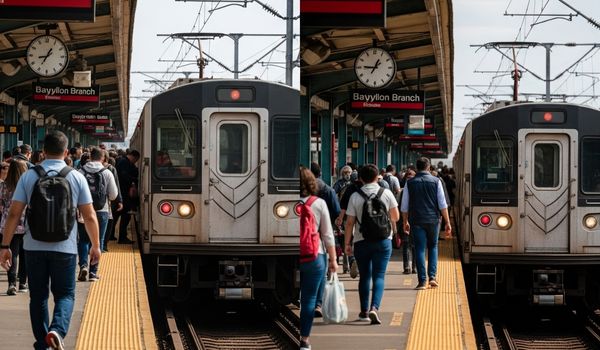
Key Terminals and Hubs
- Penn Station (Manhattan): The primary Manhattan terminal for LIRR trains.
- Grand Central Madison (Manhattan): Opened in early 2023 as part of the East Side Access project, with direct service to Manhattan’s East Side.
- Atlantic Terminal (Brooklyn): Main terminal for LIRR trains that serve Brooklyn.
- Jamaica Station (Queens): Where most branches and services make their central transfer.
- Hunterspoint Avenue & Long Island City (Queens): Terminals for select trains during the week only.
Service Types and Fare Zones
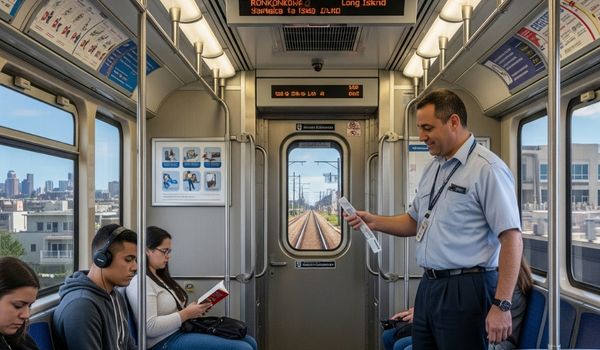
The LIRR operates several levels of service with varying fare structures and methods of operation, including the traditional fleet of electric trainsets in addition to diesel trains that operate east of the City Terminal Zone. These levels of service have been categorized as follows: local trains that stop at all stations, long-distance trains that stop at a subset of stations, express trains that only stop at major stations, and limited express trains that only stop at a few outlying stations. Pricing is based on zones, with Manhattan and parts of Brooklyn encompassed in Zone 1, and higher zone numbers stretching out into Long Island; longer trips cost more.
Recent Improvements
The East Side Access project, completed in early 2023, introduced the Grand Central Madison terminal, which made it easier to “reach the pillowcases of Manhattan’s East Side” and shortened commute times. Meanwhile, the MTA is constantly updating schedules and adding service during rush hours to try to accommodate their increasingly capture ridership.
LIRR Grand Central Map
Grand Central Madison is the advanced LIRR terminal under Grand Central Terminal in Midtown Manhattan, New York City. Its maps are aimed at helping passengers navigate a busy complex of multiple levels that allows L.I.R.R. service to reach the East Side of Manhattan for the first time.
Location and Depth
Positioned beneath Vanderbilt Avenue (43rd to 48th Street), the station is approximately 140 feet beneath Park Avenue and 90 feet below Metro-North tracks. Its deep, multi-story building form frequently appears in maps.
Station Layout
- Concourse1F: Passenger facilities including ticket gates, shops, waiting rooms and toilets.
- Street Entrances: Several entrances on 42nd, 43rd, 44th, 47th, 48th Streets and neighboring avenues.
- Mezzanine Level (I): (Has two levels with intermediate floor connecting, as concourse and platforms, via long escalators and elevators).
- Platforms: 2 side platforms (though accommodated max 8-car lengths) with eight tracks on two levels(201-204 upper, 301-304 lower).
Transit Connections
Grand Central Madison features direct transportation, with easy access to Metro-North lines through Grand Central Terminal. It is also served by several New York City Subway lines at Grand Central–42nd Street station, including the 4, 5, 6, 7, and S (Times Square–Grand Central Station) at all times. In addition, there is convenient service from various bus lines at the nearby NYCT and MTA bus stops ensuring that the station is a fully integrated a hub in the city’s diverse transit network.
LIRR Penn Station Map
Penn Station, underneath Madison Square Garden in Midtown Manhattan, is a multilevel underground hub with space allocated to concourses, tracks and transport links. It functions as three stations in one: Amtrak (intercity), Long Island Rail Road (Long Island and Queens) and NJ Transit (New Jersey commuter service).
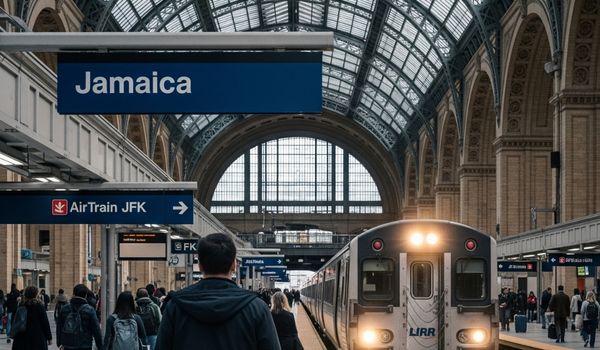
Key Areas and Their Relationship to LIRR
- Original Penn Station: This below-grade historic base is still the hub of LIRR operations under Madison Square Garden.
- LIRR Concourse: Adjacent to 7th Avenue in original station, this has been renovated to provide more space, lighting and access, and is connected to a number of LIRR platforms.
- East End Gateway: A new entrance at 33rd Street and 7th Avenue that brings daylight to the Mile and a Half as well as providing escalators and stairs from street level connecting to LIRR concourses.
- Tracks: Penn Station has 21 tracks, for the most part, L.I.R.R. uses Tracks 13 through 21. 13-16 are shared with Amtrak, while 17-21 are only for LIRR. Track assignments may change, so you’ll need to check the departure boards.
- Moynihan Train Hall: Opened 2021 in the James A. Farley Post Office Building across 8th Avenue with connections to the Penn Station platforms. Amtrak-focused but with tracks and services for LIRR riders, too. It’s open daily from 5 a.m. to 1 a.m.
Connections
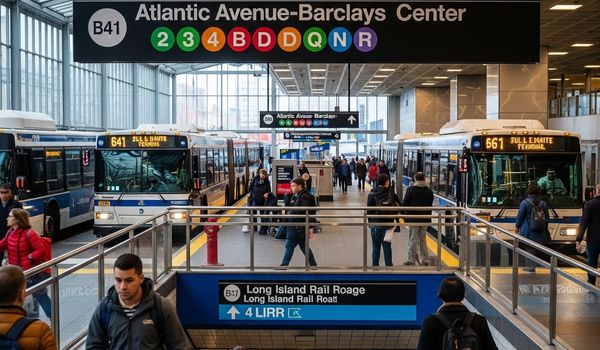
Subway links are provided by the A, C, E lines directly under 8th Avenue and the 1, 2, 3 lines under 7th Avenue with good signage to speed you on your way. There are clearly marked transfers between the Long Island Rail Road, NJ Transit, and Amtrak, while the systems are also completely separate. In adddition, there are numerous MTA Bus routes to the vicinity of Penn Station offering good connections to other forms of transportation.
Frequently Asked Questions
The entire Long Island Rail Road network operated by Long Island Railroad is included in the LIRR System Map. The lines serving Brooklyn from Long Island Railroad carried about 262,000 customers on an average weekday. All lines are summarized in the map, including those major routes, such as: Main Line, Port Washington Branch, Montauk Branch. The map is available for downloading from MTA website, mta.info/maps, so passengers can understand the full extent of the service area.
The Port Washington Branch is an integral part of the LIRR system, running from Long Island City in Queens to Port Washington on the North Shore of Long Island. The only branch of LIRR that does not go through Jamaica Station. It has a direct route, different from all others. Maps and schedules for this stretch of the line can be found online through the MTA’s website or via transit apps such as Moovit.
Grand Central Madison is a brand new terminal for LIRR underneath Grand Central Terminal in Midtown Manhattan. It is part of the East Side Access project that will provide destinations directly into the East Side of Manhattan from multiple branches of LIRR, including the Main Line and Port Washington Branch. For schedules, maps, and updates, check the Grand Central Madison section on the MTA website.
The Ronkonkoma Branch is a major east-west branch of LIRR connecting Long Island City in Queens with Ronkonkoma in Suffolk County. It provides service to many communities along its route and is heavily used by commuters. You can find the full directory of stations and the services available on the MTA website.
Most stations have Ticket Vending Machines where you can buy an LIRR ticket. Such machines accept both cash and credit cards. Staffed ticket offices are available in certain stations, where ticket agents can assist in making purchases. A ticket must be purchased before boarding in order to avoid a penalty fare, except for boarding at a station without vending machines. For the latest ticketing information, visit the MTA website or inquire from station personnel.

